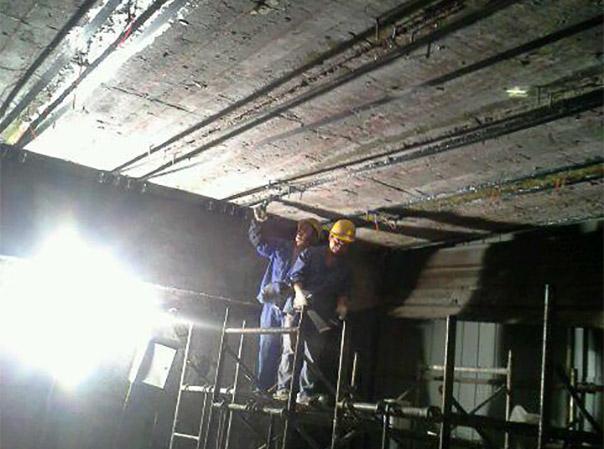The installation of the carbon fiber plate, tensioning and pasting of the prestressing force
a.by connecting screw,installing the carbon fiber plates of the two ends that have been clamped by the anchorage device on the anchorage block;
b. connecting the tensioning screw with the connected screw by using sleeve, and installing counter-force steel plate;
c. putting the fact between the counter-force steel plate and anchorage block.
d. driving the jack oil pump, doing the prestressed tensioning to the carbon fiber plate. prestressed tensioning should adopt double control of the tensioning and elongation. euro should be controlled in the 6%.
e. scrubbing the pasting surface of the
carbon fiber plate with the acetone, and smearing the bonding glue of the carbon fiber plate; at the same time, smearing the same bonding glue of the carbon fiber plate at the pasting surface of the concrete of the beam bottom;
f. after finishing the tensioning of the carbon fiber plate, tightening up the post-anchorage nut, then removing the jack and counter-force steel plate;
g. pasting the carbon fiber plate on the concrete surface with the cardboard, if there is still a large gap between carbon fiber plate and concrete surface, adding bonding glue of the carbon fiber plate and filling the gap completely. finally the hollowing rate of the pasted carbon fiber plate should be less than 5%.



